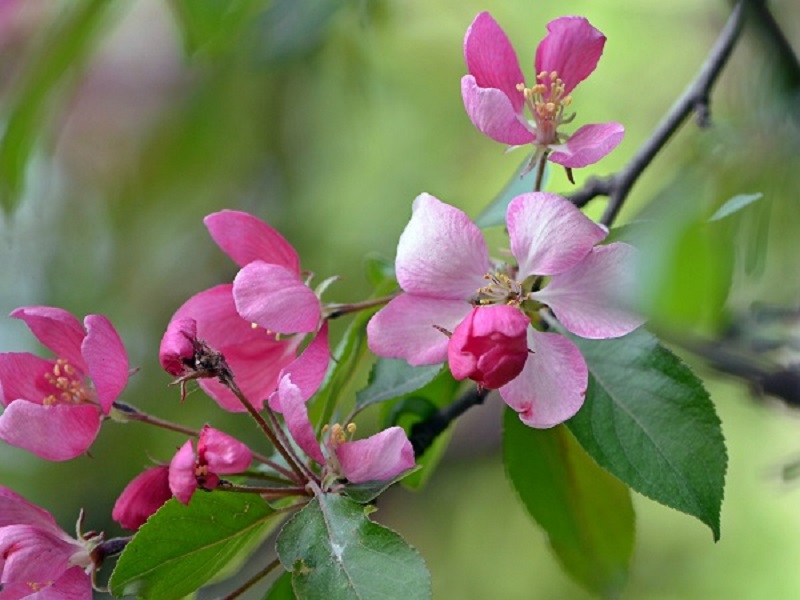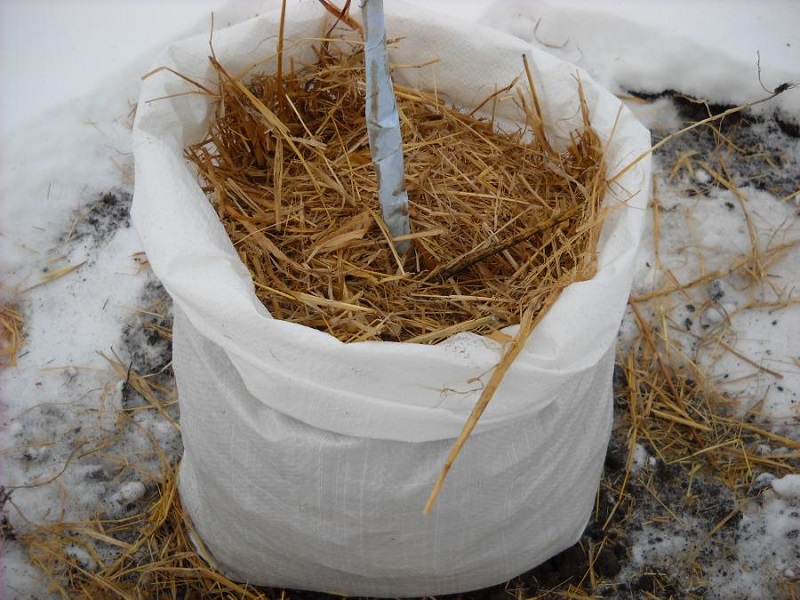Apple-tree Melba: variety description, pollinators, ripening period
Content:
The apple tree is the most popular fruit crop, without which not a single summer cottage can do. Breeders are working on developing new varieties, improving existing plant species. According to the description, Melba apples are capable of breaking yield records. That is, the work of gardeners is not in vain, because by planting an unpretentious seedling, you can enjoy delicious fruits for a long time, and also give a beautiful view to the garden.
History of creation
Apple Melba is a summer variety obtained by Canadian scientists in 1898 at a research station in Ottawa with the help of freely pollinated Mequintosh seed.
The fruit tree is named after Australian opera singer Nellie Melba. In 1940, the variety entered the territory of the Soviet Union, received many positive reviews and successfully passed all climatic tests. 7 years later, during the editing of the document, the variety was honorably entered into the State Register under the name "Melba", but most gardeners continue to call the apple tree Melba in the old fashioned way.
Apple Melba: characteristics of the variety
Before purchasing a seedling, you need to study in detail the description of the Melba apple tree, its varietal characteristics.
Crown width
A young plant up to three years of age has a columnar shape, then a medium spreading, rounded, slightly elongated crown begins to form. It reaches 7 m in diameter. The Melba apple tree is medium-sized, the plant height is up to 3 m on average, rarely 4 m. The tree is characterized by a thick trunk and dark brown bark. Slightly drooping branches of medium thickness. Light green oblong foliage with jagged edges.
The beginning of fruiting
4 years after planting, the first small crop can be harvested, in the future the fruiting rate will only increase.
Winter hardiness and drought resistance
The Melba apple tree is characterized by average winter hardiness, there is a risk of freezing when cultivated in the northern regions, where the temperature in winter drops to -30 degrees. Despite this, many gardeners successfully grow the variety in Siberia. Zoning species, bred by breeders specifically for cultivation in the northern zone - Melba red apple tree.
Ripening terms
Flowering begins in early spring, in April. The attention is drawn to the large white and pale pink flowers of the apple tree with bright purple veins and a pleasant aroma.
Melba apples ripen only at the end of summer, in the second half of August. This happens at different times, stretched out, which allows you to enjoy fresh fruit for a month and a half.
The fruit rests on a thin, short stalk, therefore, after ripening, it does not hang for a long time, but falls off. Harvesting is best done in a timely manner by hand, so the fruits will lie for several weeks more.
Tasting assessment
Melba is a variety of apples that are quite large, slightly elongated from top to bottom, flattened in shape. Fruit color is green-yellow with red stripes.Their weight is 120-150 g. Sometimes this figure increases. The skin is soft, smooth and durable. The pulp is white, characterized by juiciness, sweet and sour pleasant taste and notes of candy aroma. On a five-point system, the palatability of the fruit is estimated at 4.5 points.
Cyclic fruiting
For the first 12 years, regular abundant fruiting is observed. After that, cyclicality may develop: the year the plant presents a generous and high-quality harvest, the second year falls into a dormant stage.
Sapling cost
The cost of a seedling differs depending on the growing area:
| Region | Sapling price (rubles) | |
| 3 years | 4 years | |
| Moscow, Moscow region, St. Petersburg | 1000 | 2500 |
| Northwestern | 320 | 650 |
| Krasnodar | 220 | 450 |
| Ural | 300 | 600 |
This difference in price is due to the fact that Apple Melba is cultivated more in southern latitudes and regions with a temperate climate.
In a cool summer and a harsh winter, the fruit tree does not bear fruit and dies, so it is quite difficult to grow a seedling.
Pollinators
The Melba apple tree belongs to self-fertile crops, but to improve the yield and quality of the fruits next to it for additional pollination, it is recommended to plant:
- Antonovka;
- Suislepskoe;
- Stark Erlist;
- Bellefleur-Chinese;
- Borovinka.
The presence of pollinating varieties in the neighborhood will provide a decent harvest of tasty and juicy fruits.
Advantages and disadvantages of the variety
The positive qualities of the Melba apple tree, which determines its high place in the rating of popular varieties:
- early maturity, the culture enters fruiting 4 years after planting;
- high productivity;
- ample opportunities for using fruits;
- presentable presentation, excellent taste characteristics of the fruit;
- long-term preservation of apples, subject to the recommendations;
- the harvest can withstand long distance transportation.
According to the description of Melba apples, this variety has disadvantages:
- poor resistance to fruit scab and powdery mildew of leaves;
- the occurrence of cyclic fruiting at the age of 10 years;
- average frost resistance;
- the need for additional pollinators to ensure a good harvest.
Features of cultivation in different regions of Russia
Basic requirements for a site for cultivating an apple tree:
- an elevated seat to avoid moisture stagnation;
- groundwater at a depth of at least 1.5 m;
- disembarkation from the south, southeast side for a sufficient amount of heat and light;
- the presence of loose soil of neutral acidity with sand and clay;
- providing protection from drafts and cold winds;
- no trees within a radius of 5 m.
The timing of planting seedlings depends on the growing region:
- In the case of cold and harsh winters, with air temperatures consistently below -20 degrees, you can plan an event only in early spring, in April, before bud break.
- In southern regions with hot, dry summers, it is better to carry out an autumn planting, at least a month before frost.
- In temperate climatic zones, planting an apple tree is encouraged in the second half of September or early October.
2 days before planting, it is necessary to place the root system of the seedling in a container with water, and before the process itself, immerse it in a mixture of droppings, water and clay.
Instructions for planting an apple tree seedling Melba:
- 2 weeks before planting, dig a hole with a diameter of 1 m and a depth of 80 cm.
- Put a layer of broken brick drainage on the bottom of the hole.
- Drive in a wooden peg for support.
- Immerse the root system, straighten it so that the root collar is at a height of 6-8 cm from the ground level.
- Cover with fertile soil and tie to a peg.
- Seal the trunk circle, pour 2 buckets of warm, settled water.
- Mulch using peat, dry grass.
Plant care
Basic rules for caring for a young plant:
- Watering. The procedure can be carried out from the moment the kidneys form until October. Frequency - every 30 days, in dry summer you need to water the tree more often. A young seedling has 20 liters of water. An adult fruiting tree needs 40-60 liters.
- Mulching. After watering, you need to apply mulch to the trunk circle so that the moisture lingers longer.
- Top dressing. Fertilizer should be applied in the second year after planting 4 times a season: in May and early June - a bucket of water with 500 g of urea, at the end of July - a solution of chicken manure (12: 1), in the fall - 700 g of ash, a bucket of peat, 100 g Superphosphate and 50 g of sulfuric potassium.
- Supports. A large number of fruits can break off thin branches, so they need support.
- Pruning. In early spring, all small shoots should be removed, and the main trunk should be shortened by a third, over time, 3 tiers of the crown should be formed from the strongest shoots. The distance between them should be at least 40-50 cm.
Harvesting and storage
In order for the fruits to be stored for a long time, they should be plucked in an immature form. If allowed to ripen, they will fall off. You can ensure good keeping quality of the product by observing the following rules:
- remove fruits by hand, trying to avoid impacts and mechanical damage;
- collect in dry weather;
- send for storage fruits that look presentable, have a whole peel, without damage, signs of decay;
- wrap each apple in paper, place it in a wooden box and send it to the basement or refrigerator;
- provide a storage temperature from 0 to +2 degrees.
Preparing for winter
Preparing for winter involves the following procedure:
- Conduct sanitary pruning by removing any dead branches.
- Treat the lower part of the trunk with a lime solution to protect it from parasites, icing of the bark.
- Spread a layer of mulch near the trunk to prevent the roots from freezing.
- Wrap the tree with several layers of burlap, placing dry straw between them, securely fix the installation with a rope.
Diseases and pests
The variety is characterized by low resistance to diseases and pests, therefore it needs a systematic examination and preventive measures. The most common apple infections are scab, powdery mildew, fruit rot, and black cancer. The tree can be attacked by apple moth, leafworm, scale insect and moth.
Apple-tree Melba is a fairly popular variety in Russia, which has a large number of positive reviews. The main thing is to provide the plant with proper care and carry out all the necessary measures in a timely manner, then a large harvest of large and tasty fruits will be provided.
























